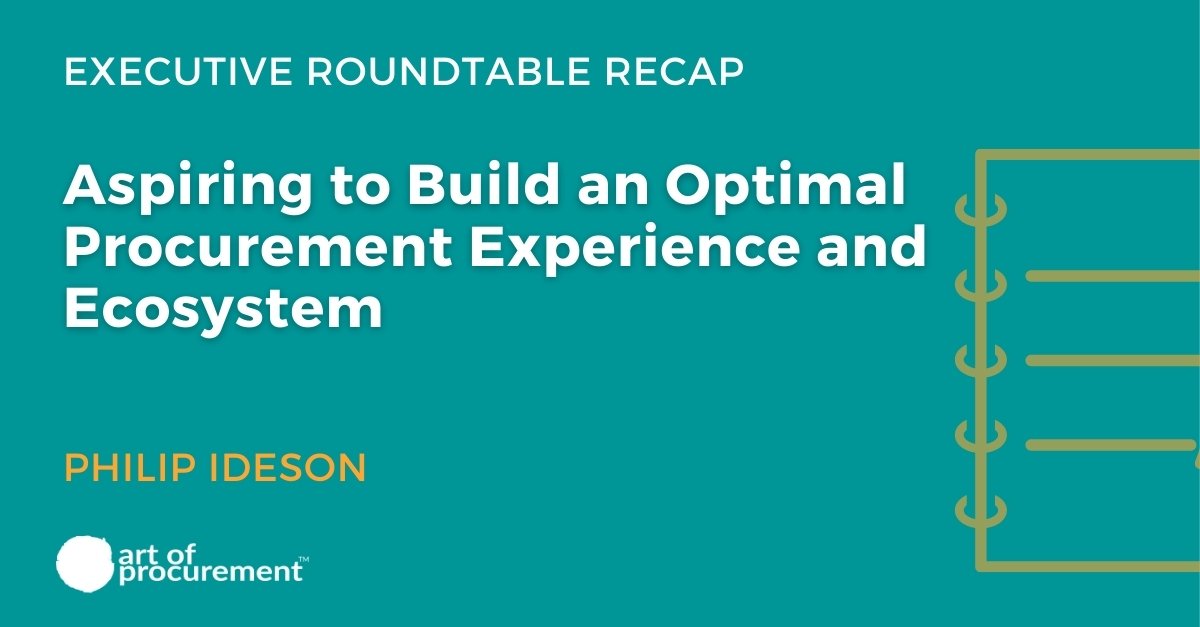
We’re all participants in the experience economy, sometimes as consumers and sometimes as providers. When procurement finds itself in the experience provider seat, we have to make sure our talent, processes, and systems create an advantage rather than holding us back.
The stakeholder experience has been one of the biggest barriers to procurement success so far. Those of us who want to be more relevant and work on strategic initiatives must understand that improving the procurement experience NOW is the key.
Art of Procurement recently collaborated with the team at Globality to write a paper and lead an executive roundtable, both of which were focused on the procurement experience. We took a hard look at some of the truths procurement leaders must face before they can create a world-class user experience.
The three truths are as follows:
Truth #1: If procurement expects the business to approach us with every question or need, then our transformation has failed. We can’t be a roadblock preventing the business from achieving their primary objectives.
There will never be enough people – whether you’re a team of 12 or 1,200 – to do all the work you want to do. Procurement professionals need to be incentivized to stop doing the things that aren’t valuable. Those tasks should be automated, either completely or by empowering the business to serve themselves. Then procurement can get closer to having enough people to do the work that will move the needle on relationships, business strategy, and problem solving.
One of the best ways for procurement to enable the business is to leverage automation in all non-strategic efforts, helping the business accomplish what is most critical to them. And as we adopt that approach, procurement will have to adjust our priorities accordingly.
Company culture matters, and procurement needs to be aware of and able to work inside of the dynamics it creates – especially if we want to be seen as strategic advisors. We must recognize this while redesigning the procurement experience and work with the culture, not against it.
Truth #2: Corporate experiences have to match or surpass the ecommerce customer experience. The goal is to make the procurement experience easy and intuitive, without a training requirement.
The B2C customer experience is not entirely replicable in a B2B setting. Corporate procurement can be consumer-like up to a point, but some of the complexities of real world B2B operations – including the scope and scale of supply networks – requires an experience that is better than what we’ve provided in the past but different than consumer eCommerce.
One particularly thoughtful comment made during the executive roundtable was about using built-for-purpose technologies to do specific things – ideally the things they were designed to deliver. Procurement should consider building a best of breed ecosystem, one that has a clear a front door to streamline the user experience. The ecosystem should function like an operating system, improving the user experience by bringing everything the buyer might need together in one place.
Truth #3: User experience on its own is not enough. Procurement needs to think bigger. Is our value proposition compelling enough for the business to want to work with us?
Business enablement, whether through self-service platforms or streamlined processes, is the most critical factor to transforming the procurement experience. And yet, organizational maturity and category strategies still have to be respected. Wanting to empower the business does not mean procurement should make all spend available for self-service. We need to be confident that our value proposition is clear enough that we have the right to provide a qualified ‘no’ when appropriate.
Procurement can’t afford to look at all spend the same way, any more than we can look at all suppliers as the same. Some categories will need to be brought under management by the procurement before they are even considered for self-service processes, both to maximize value and to minimize risk. That is a corporate value proposition – and a corporate decision.
The effort to transform the procurement experience starts with changing what it is like to work in procurement. Which efforts should be prioritized and which offloaded? That decision is a critical first step towards creating a radically transformed procurement experience that benefits everyone.
For more information:
- View the AOP Digital Outcomes session: How Experiential Procurement Ecosystems Fuel Value & Growth
- View the AOP Digital Outcomes session: Why Self-Guided Buying Can Enable the Business to Scale Quickly
- Download the whitepaper: Empowering Procurement to Drive Value Through a Radically Transformed User Experience




